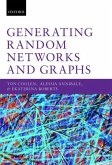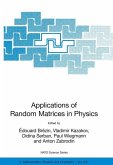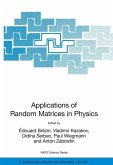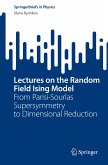Short description/annotation
Self-contained introduction to the applications of random walk techniques.
Main description
Random walks have proven to be a useful model in understanding processes across a wide spectrum of scientific disciplines. Elements of the Random Walk is an introduction to some of the most powerful and general techniques used in the application of these ideas. The mathematical construct that runs through the analysis of the topics covered in this book, unifying the mathematical treatment, is the generating function. Although the reader is introduced to modern analytical tools, such as path-integrals and field-theoretical formalism, the book is self-contained in that basic concepts are developed and relevant fundamental findings fully discussed. Mathematical background is provided in supplements at the end of each chapter, when appropriate. This self-contained text will appeal to graduate students across science, engineering and mathematics who need to understand the applications of random walk techniques, as well as to established researchers.
Table of contents:
1. Introduction to techniques; 2. Generating functions I; 3. Generating functions II: recurrence, sites visited and the role of dimensionality; 4. Boundary conditions, steady state and the electrostatic analogy; 5. Variations on the random walk; 6. The shape of a random walk; 7. Path integrals and self-avoidance; 8. Properties of the random walk: introduction to scaling; 9. Scaling of walks and critical phenomena; 10. Walks and the O(n) model: mean field theory and spin waves; 11. Scaling, fractals and renormalization; 12. More on the renormalization group.
Hinweis: Dieser Artikel kann nur an eine deutsche Lieferadresse ausgeliefert werden.
Self-contained introduction to the applications of random walk techniques.
Main description
Random walks have proven to be a useful model in understanding processes across a wide spectrum of scientific disciplines. Elements of the Random Walk is an introduction to some of the most powerful and general techniques used in the application of these ideas. The mathematical construct that runs through the analysis of the topics covered in this book, unifying the mathematical treatment, is the generating function. Although the reader is introduced to modern analytical tools, such as path-integrals and field-theoretical formalism, the book is self-contained in that basic concepts are developed and relevant fundamental findings fully discussed. Mathematical background is provided in supplements at the end of each chapter, when appropriate. This self-contained text will appeal to graduate students across science, engineering and mathematics who need to understand the applications of random walk techniques, as well as to established researchers.
Table of contents:
1. Introduction to techniques; 2. Generating functions I; 3. Generating functions II: recurrence, sites visited and the role of dimensionality; 4. Boundary conditions, steady state and the electrostatic analogy; 5. Variations on the random walk; 6. The shape of a random walk; 7. Path integrals and self-avoidance; 8. Properties of the random walk: introduction to scaling; 9. Scaling of walks and critical phenomena; 10. Walks and the O(n) model: mean field theory and spin waves; 11. Scaling, fractals and renormalization; 12. More on the renormalization group.
Hinweis: Dieser Artikel kann nur an eine deutsche Lieferadresse ausgeliefert werden.








